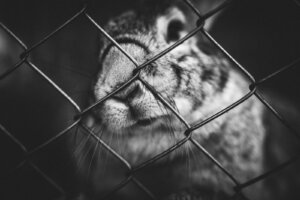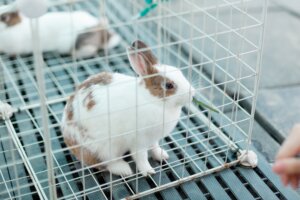Understanding its Role in the Beauty & Personal Care Industry

Animal testing has long been a controversial subject, especially within the beauty and personal care industry. It involves conducting experiments on animals to evaluate the safety and efficacy of various products and ingredients. While the practice has been prevalent for decades, it has increasingly come under scrutiny due to ethical concerns and advancements in alternative testing methods. In this article, we will delve into the definition of animal testing, explore its historical context, discuss its significance in the beauty/personal care industry, and shed light on the emerging alternatives that aim to replace animal testing.
Animal testing, also known as vivisection or animal experimentation, refers to the use of animals in scientific experiments to gain insights into the effects of substances on living organisms. In the beauty/personal care industry, animal testing typically involves testing cosmetic products, ingredients, or formulations on animals to assess their safety, potential side effects, and efficacy.
Animal testing has a long history dating back to ancient Greece and Rome, where animals were dissected for anatomical studies. However, the modern use of animals in experiments gained momentum during the 20th century with the development of new drugs and chemicals. Initially, animal testing was considered an essential step in ensuring consumer safety and product effectiveness. Regulatory agencies such as the Food and Drug Administration (FDA) and the European Medicines Agency (EMA) mandated animal testing to evaluate the safety of cosmetic ingredients and finished products before they reached the market.
The beauty/personal care industry has traditionally relied on animal testing to determine the safety of products and ingredients. Common tests conducted include skin and eye irritation tests, dermal toxicity tests, and repeated dose toxicity tests. However, due to growing concerns about the welfare of animals and the effectiveness of such tests in predicting human responses, the beauty/personal care industry has faced increasing pressure to adopt alternative methods.
Critics of animal testing argue that subjecting animals to potentially harmful substances is inhumane and morally unjustifiable. They contend that animals suffer unnecessarily and that their use in experiments does not guarantee human safety due to physiological and genetic differences. Animal rights organizations have played a significant role in advocating for the abolition of animal testing, raising awareness about the issue, and pushing for the development and implementation of alternative testing methods.

In recent years, significant progress has been made in developing alternatives to animal testing. These include in vitro methods (e.g., cell cultures, tissue engineering), computer modeling (in silico testing), and the use of human volunteers for clinical trials. In addition, advanced technologies such as microfluidics, 3D skin models, and organ-on-a-chip systems show promise in replicating human biology more accurately and reducing reliance on animal testing.
While animal testing has been an integral part of the beauty/personal care industry for many years, public sentiment and advancements in science and technology are driving a shift towards alternative testing methods. The industry is increasingly embracing cruelty-free practices and investing in innovative solutions that avoid animal testing altogether. As consumers become more aware of the issue, it is crucial for the industry to continue prioritizing ethical and sustainable practices, ensuring the safety of products while respecting the welfare of animals.

